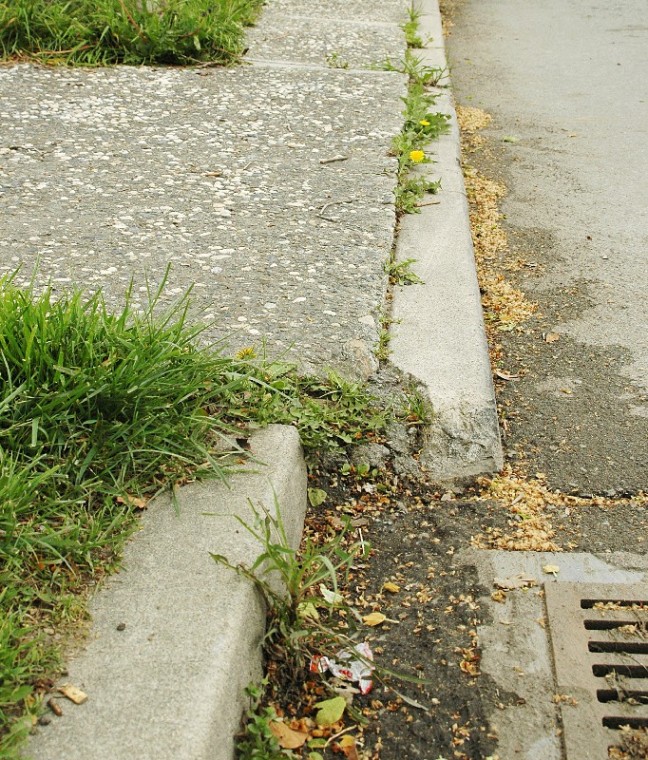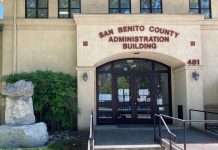
Hollister City Council members are moving forward on negotiations for a contract with Lettis Consultants International on a proposed two-phase surface fault investigation of downtown, which is viewed as necessary if economic development is to continue downtown.
The investigation will focus on 13 acres of downtown Hollister, including over 50 separate buildings and parcels.
During a recent special meeting, LCI Principal Geologist John Baldwin gave a presentation to council members Karson Klauer, Ray Friend, and Mickie Luna. Mayor Ignacio Velazquez and Councilman Victor Gomez were absent. The presentation showed LCI’s expertise and recent work in Hollywood, what the two-phase surface fault investigation could entail, and estimates as to what the investigation could cost.
Phase 2A will cost around $425,000, with Phase 2B coming in significantly more expensive. However, it costs less to have the city conduct the surface fault investigation, compared with individual property owners conducting their own individual investigations.
If economic development is to continue in downtown Hollister, a surface fault investigation is necessary due to the Alquist-Priolo Earthquake Fault Zoning Act. A surface fault hazard investigation is required when any of the following triggers the A-P Act:
-Construction of a single-family wood or steel-framed residence with more than two floors that is not part of a development of four or more dwellings
-subdivision of land that contemplates the eventual construction of structures for human occupancy
-construction of a non-residential structure that will be occupied by a person more than 2000 hours per year
-alteration or addition to a building that exceeds 50 percent of the assessed value of the structure
-a single family wood frame or steel frame dwelling not exceeding two stories, when that dwelling is not part of a development of four or more dwellings
Typical A-P study costs can range from $50 to $100,000 per parcel. Larger and more complicated parcels can exceed $200,000 due to expenses like road repair and redirection of traffic, according to the city. As an example, the 2009 surface fault investigation for the reconstruction of Fire Station 1 on Sally Street cost $115,000 for its 11,760 square-foot lot.
How the City of Hollister plans to pay for the investigation was not determined. One possible option is to have the city front the costs. Property owners would then be required to pay back the city their pro-rata, or proportional, cost for the fault study when a building permit or subdivision request on the property triggers the requirement for a surface fault investigation.
It’s expected that Phase 2A will take four months to complete.
The former Hollister Redevelopment Agency funded multiple surface fault investigations in 1991 in order to assist with reconstruction of buildings damaged during the Loma Prieta Earthquake.
Council members also funded a supplemental report in 2015 that cleared a large portion of downtown for development based on an evaluation of prior surface fault investigations.
Business owner Tony LoBue asked what happens if a surface fault is found on a property. Baldwin and City Manager Bill Avera worked together on the answer.
Here’s how they explained it:
If a surface fault is found on a property, a non-buildable area is established, which is typically 50 feet wide extending from the mapped trace of the active fault. The remainder of the property outside the non-buildable area is considered cleared for development. The non-buildable area can be incorporated into a new development in the form of a park, a street, a parking lot, or for other uses that don’t include structures for human occupancy. Existing non-buildable areas in Hollister include the driveway entry and parking area at the Adams Square commercial center on Tres Pinos Road and Southridge Drive in the Tiffany Ranch subdivision.
Councilman Friend had concerns about the cost of the investigation.
“It seems like we have no idea what this is going to cost us,” Friend said. “But we know they want $425,000 to get to the point to tell us what it’s going to cost. And we still don’t even know who’s going to pay for it. I don’t think the city should pay for all of it. Some of it, yes, it is part of the economic development. But you’re asking us for a blank check and we’re not Hollywood. We don’t have $425,000 to just do a study to tell us what we need to spend.”
Avera responded to the concern.
“I think the council and the city should feel fairly comfortable that this money, although it may not come back in the next five, 10, 20 years, but eventually it will come back,” Avera said. “If you’ll allow us to at least start the process for the downtown properties or the benefit area and get that established, I think we’ll be in a much better place in a few months than we are right now with development of downtown.”








